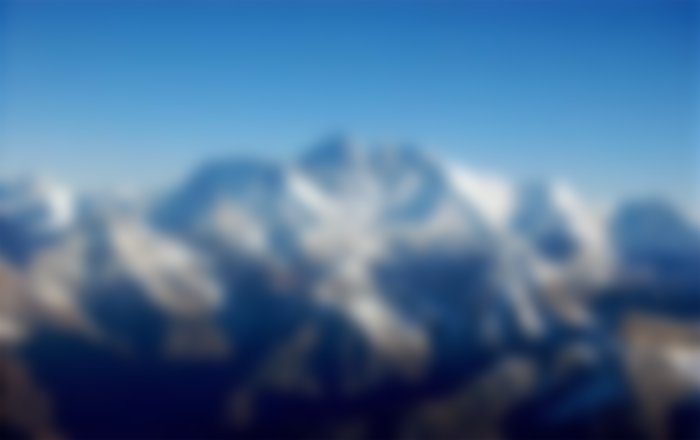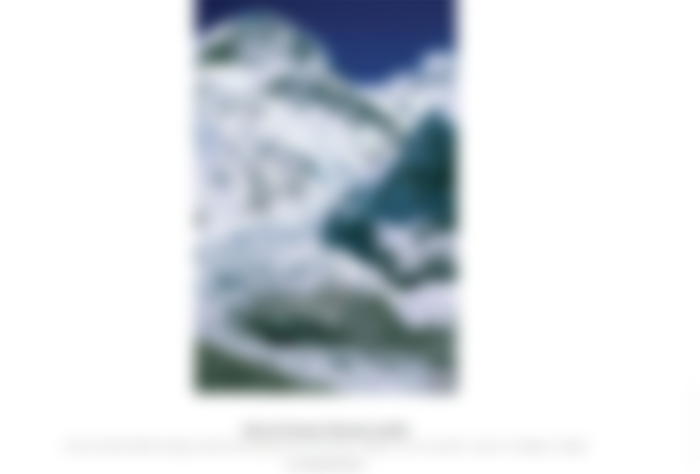Mount Everest
mountain, Asia
WRITTEN BY
orginal written by
Wilfrid Noyce See All ContributorsMember, British Mount Everest Expedition, 1953. Author of Mountains and Men, Scholar Mouintaineers, and others.
Mount Everest, Sanskrit and Nepali Sagarmatha, Tibetan Chomolungma, Chinese (Pinyin) Zhumulangma Feng or (Wade-Giles romanization) Chu-mu-lang-ma Feng, also spelled Qomolangma Feng, mountain on the crest of the Great Himalayas of southern Asia that lies on the border between Nepal and the Tibet Autonomous Region of China, at 27°59′ N 86°56′ E. Reaching an elevation of 29,035 feet (8,850 metres), Mount Everest is the highest mountain in the world.

Like other high peaks in the region, Mount Everest has long been revered by local peoples. Its most common Tibetan name, Chomolungma, means “Goddess Mother of the World” or “Goddess of the Valley.” The Sanskrit name Sagarmatha means literally “Peak of Heaven.” Its identity as the highest point on the Earth’s surface was not recognized, however, until 1852, when the governmental Survey of India established that fact. In 1865 the mountain—previously referred to as Peak XV—was renamed for Sir George Everest, British surveyor general of India from 1830 to 1843.

Mount Everest
New Zealander Edmund Hillary and Sherpa Tenzing Norgay were the first to summit Mount Everest in 1953. As of 2017, more than 7,600 people have reached the top of the mountain, and nearly 300 have perished in the attempt.Encyclopædia Britannica, Inc./Kenny Chmielewski
Physical Features
Geology and relief
The Himalayan ranges were thrust upward by tectonic action as the Indian-Australian Plate moved northward from the south and was subducted (forced downward) under the Eurasian Plate following the collision of the two plates between about 40 and 50 million years ago. The Himalayas themselves started rising about 25 to 30 million years ago, and the Great Himalayas began to take their present form during the Pleistocene Epoch (about 2,600,000 to 11,700 years ago). Everest and its surrounding peaks are part of a large mountain massif that forms a focal point, or knot, of this tectonic action in the Great Himalayas. Information from global positioning instruments in place on Everest since the late 1990s indicates that the mountain continues to move a few inches to the northeast and rise a fraction of an inch each year.

Everest, Mount: full view
The Mount Everest massif, Himalayas, Nepal.© Marta/Fotolia
Everest is composed of multiple layers of rock folded back on themselves (nappes). Rock on the lower elevations of the mountain consists of metamorphic schists and gneisses, topped by igneous granites. Higher up are found sedimentary rocks of marine origin (remnants of the ancient floor of the Tethys Sea that closed after the collision of the two plates). Notable is the Yellow Band, a limestone formation that is prominently visible just below the summit pyramid.
The barren Southeast, Northeast, and West ridges culminate in the Everest summit; a short distance away is the South Summit, a minor bump on the Southeast Ridge with an elevation of 28,700 feet (8,748 metres). The mountain can be seen directly from its northeastern side, where it rises about 12,000 feet (3,600 metres) above the Plateau of Tibet. The peak of Changtse (24,803 feet [7,560 metres]) rises to the north. Khumbutse (21,867 feet [6,665 metres]), Nuptse (25,791 feet [7,861 metres]), and Lhotse (27,940 feet [8,516 metres]) surround Everest’s base to the west and south.
Everest is shaped like a three-sided pyramid. The three generally flat planes constituting the sides are called faces, and the line by which two faces join is known as a ridge. The North Face rises above Tibet and is bounded by the North Ridge (which meets the Northeast Ridge) and the West Ridge; key features of this side of the mountain include the Great and Hornbein couloirs (steep gullies) and the North Col at the start of the North Ridge. The Southwest Face rises above Nepal and is bounded by the West Ridge and the Southeast Ridge; notable features on this side include the South Col (at the start of the Southeast Ridge) and the Khumbu Icefall, the latter a jumble of large blocks of ice that has long been a daunting challenge for climbers. The East Face—or Kangshung (Kangxung) Face—also rises above Tibet and is bounded by the Southeast Ridge and the Northeast Ridge.

The summit of Everest itself is covered by rock-hard snow surmounted by a layer of softer snow that fluctuates annually by some 5–20 feet (1.5–6 metres); the snow level is highest in September, after the monsoon, and lowest in May after having been depleted by the strong northwesterly winter winds. The summit and upper slopes sit so high in the Earth’s atmosphere that the amount of breathable oxygen there is one-third what it is at sea level. Lack of oxygen, powerful winds, and extremely cold temperatures preclude the development of any plant or animal life there.
Drainage and climate
Glaciers cover the slopes of Everest to its base. Individual glaciers flanking the mountain are the Kangshung Glacier to the east; the East, Central, and West Rongbuk (Rongpu) glaciers to the north and northwest; the Pumori Glacier to the northwest; and the Khumbu Glacier to the west and south, which is fed by the glacier bed of the Western Cwm, an enclosed valley of ice between Everest and the Lhotse-Nuptse Ridge to the south. Glacial action has been the primary force behind the heavy and continuous erosion of Everest and the other high Himalayan peaks.

Khumbu Glacier
Frozen pond on the Khumbu Glacier, near Mount Everest, Himalayas, Nepal.© Shawn McCullars
The mountain’s drainage pattern radiates to the southwest, north, and east. The Khumbu Glacier melts into the Lobujya (Lobuche) River of Nepal, which flows southward as the Imja River to its confluence with the Dudh Kosi River. In Tibet the Rong River originates from the Pumori and Rongbuk glaciers and the Kama River from the Kangshung Glacier: both flow into the Arun River, which cuts through the Himalayas into Nepal. The Rong, Dudh Kosi, and Kama river valleys form, respectively, the northern, southern, and eastern access routes to the summit.
The climate of Everest is always hostile to living things. The warmest average daytime temperature (in July) is only about −2 °F (−19 °C) on the summit; in January, the coldest month, summit temperatures average −33 °F (−36 °C) and can drop as low as −76 °F (−60 °C). Storms can come up suddenly, and temperatures can plummet unexpectedly. The peak of Everest is so high that it reaches the lower limit of the jet stream, and it can be buffeted by sustained winds of more than 100 miles (160 km) per hour. Precipitation falls as snow during the summer monsoon (late May to mid-September). The risk of frostbite to climbers on Everest is extremely high.





wonderful Everest. Nice description. Thank you so much.